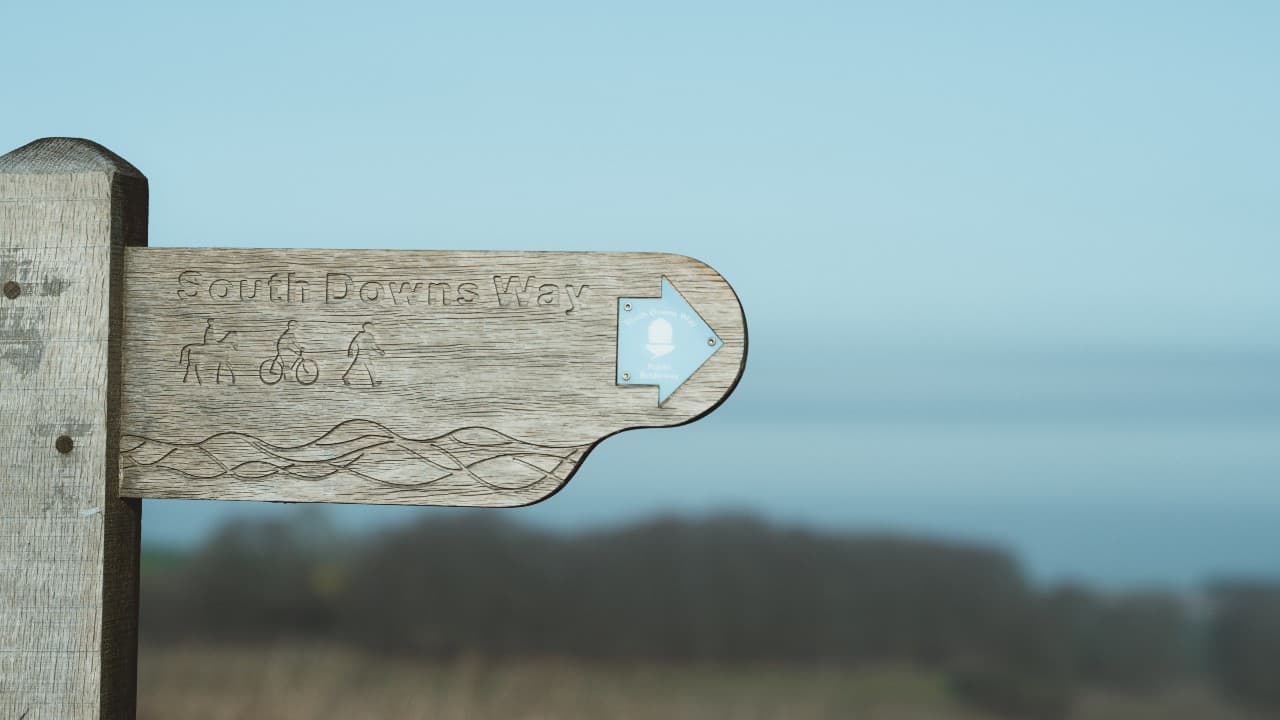One of England’s National Trails, the South Downs Way, is a 160km long-distance walk, the entirety of which sits within the South Downs National Park. The trail goes from the city of Winchester to Eastbourne, a famous seaside town with iconic white cliffs.
If you’re a bit of a completionist, keen to tackle a long-form trek over a concentrated area of land, this one might be the perfect walk for you – the trail traverses the entire length of the national park.
It’s a varied walk, with cliffs, countryside, and country pubs, and offers a diverse selection of what southern England has to offer. It’s also a relatively short trail compared to other long-distance routes around the UK, so it’s a great choice if you don’t want too much of a challenge.
The total elevation profile is 3800m throughout the entirety of the walk, which, considering the distance, isn’t too intimidating, The trail is also very easy to follow, so it doesn’t offer any challenges in the way of navigation.
For diversity and beauty without too much difficulty, it doesn’t get much better than this. It’s also a good choice for those seeking reliable weather – the conditions on northern trails can sometimes be a little bit more volatile and unpredictable.
Which Way Should I Walk South Downs Way?
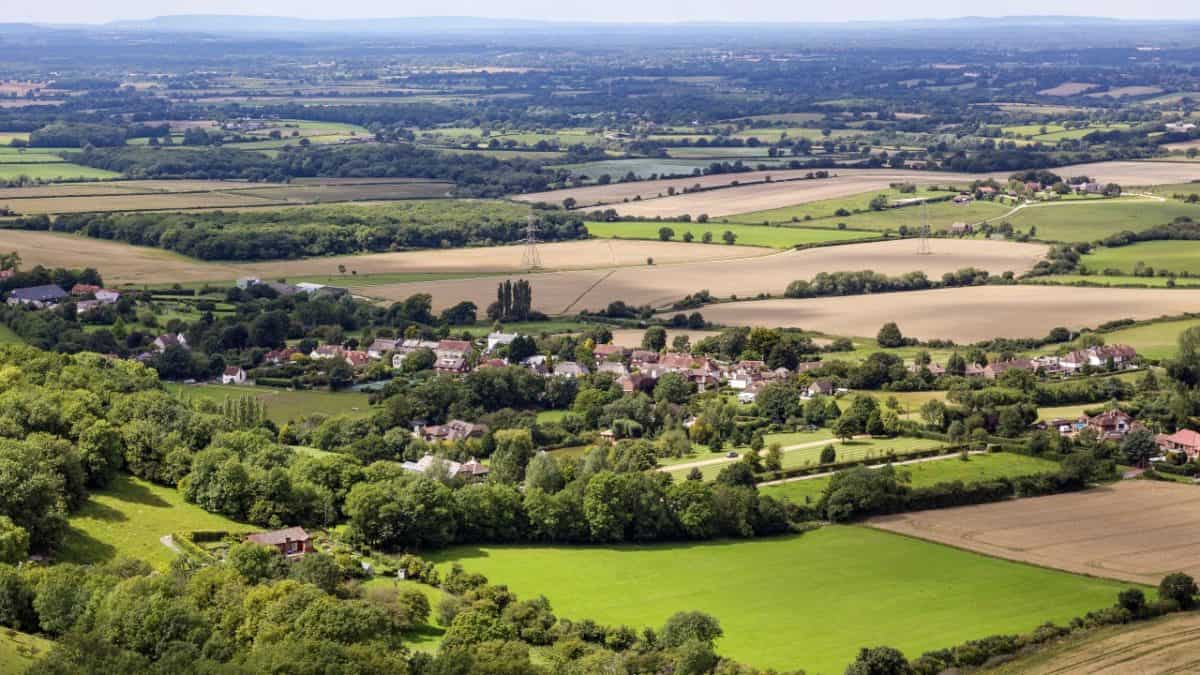
Most people walk from west to east. If you walk in this direction, you’ll have the prevailing wind at your back. Walking in this direction also means that you complete your hike at the white chalk cliffs of Eastbourne. These cliffs are absolutely spectacular even on a normal day.
But as a climax to a multi-day walk, they’re even more special, especially as you see the ocean coming into view on the final stretch. That said, if you live somewhere along the route which makes the opposite direction easier (or you fancy the opposite direction for whatever reason!), it’s still a great walk either way.
Where Will The Trail Take Me?
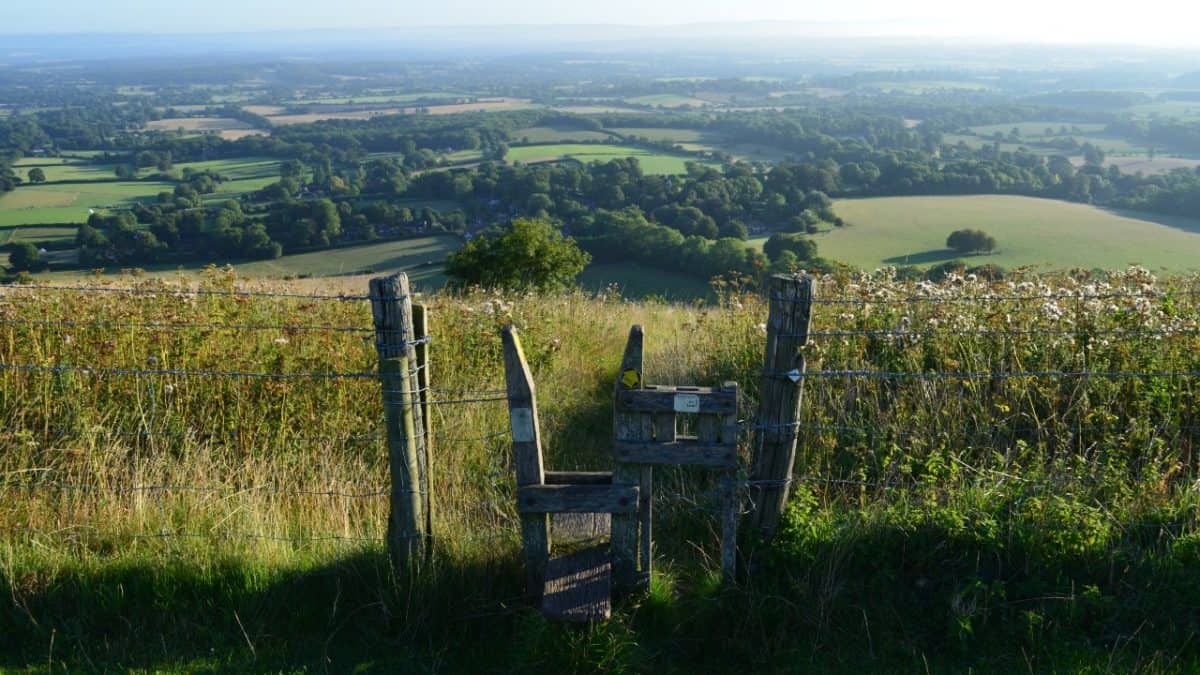
Because this hike traverses the entire length of the South Downs National Park, it’s a great way to get a big taste of this part of the world. The south of England is a busy region with lots of hustle and bustle. But this hike, though you’re never too far from civilisation, feels like a world away from the city life you might associate with the south.
The National Park has forests, cliffs, quaint towns and plenty more. And because lots of the trail runs along a chalk ridge, you have fantastic views throughout the entirety of the walk. You’ll also experience Winchester and Eastbourne, which are both fantastic locations in their own right. Along the way, you’ll also experience great pubs, great wildlife and great people.
Why Hike South Downs Way
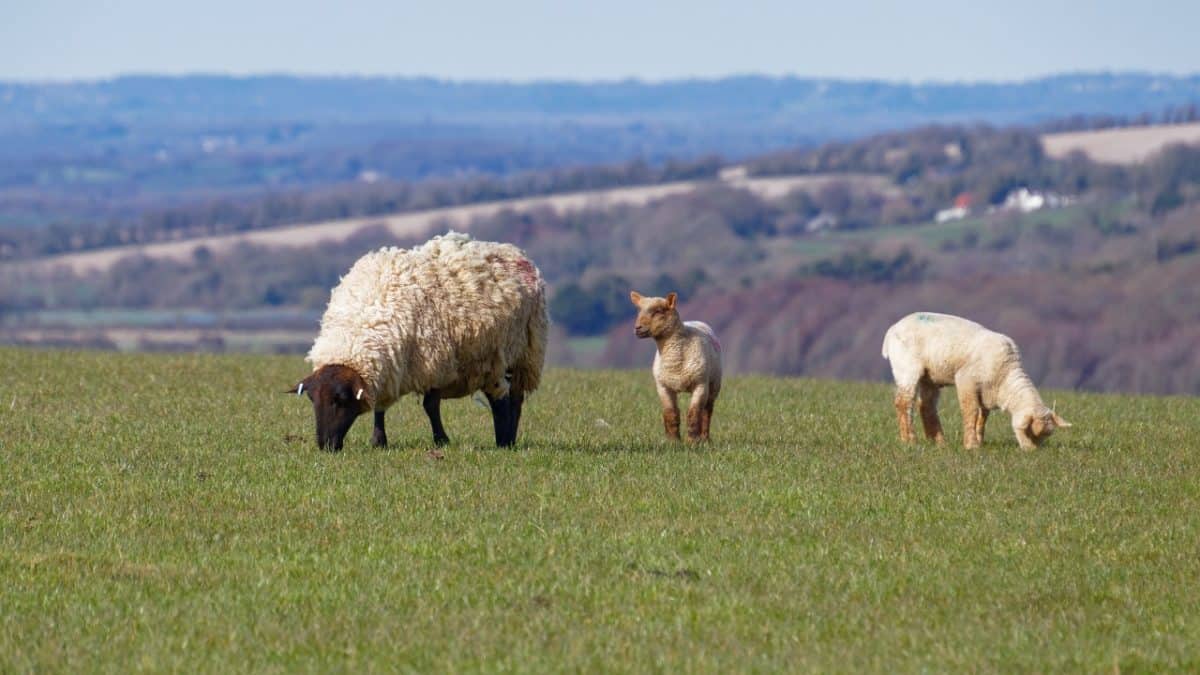
There are many reasons!
- Views. Because of the geography of the walk, you’re treated to fantastic views without too much effort. Walking along a ridge means you have fantastic panoramas without a massive amount of ascent and descent.
- For the challenge. Any long-distance walk is a big task. And this one is no different. The sense of accomplishment at the end of any hike is fantastic. The South Downs Way in particular might appeal to completionists since it’s located entirely within one National Park – and it covers a huge portion of it.
- It’s a great way to get healthy and active. Hiking is great for your body and mind!
- To join a community of other hikers, ramblers and trekkers. Along the way, you’ll meet many other people tackling the trek.
- The weather. In England, you never get a guarantee of good weather. But if you want a walk with one, this is about the best you’ll get – the south of England is more temperate than the north, while the chalk valleys make the terrain dry and unmuddied.
- For the many famous sites and scenes across the way.
What Are Some Of These Sites?
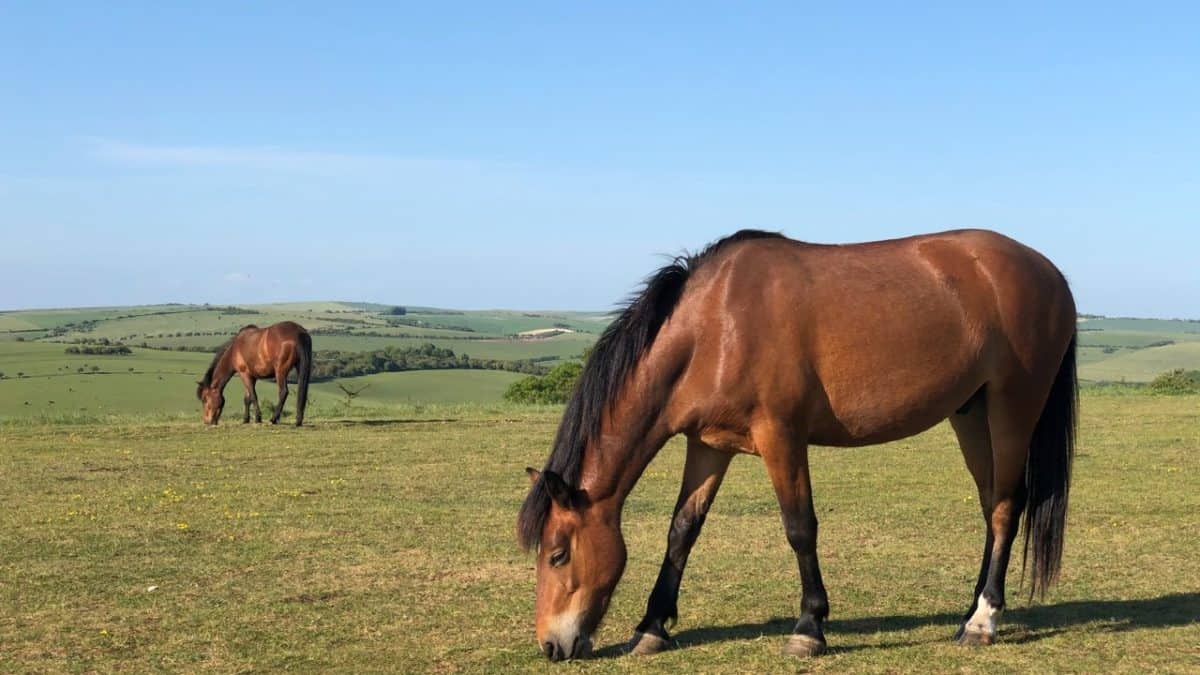
Walking from west to east, you’ll hit these highlights:
- Winchester! The first capital of England is a beautiful location to embark from. With stunning Elizabethan architecture, a wonderful cathedral and a beautiful riverside location, Winchester still very much steeps in its grand past. Give yourself a little bit of time to explore the quaint city before you move on to more remote pastures.
- Beacon Hill National Nature Reserve. A beautiful little area, it has a 201m summit which offers fantastic views of the valley, along with wildflowers, carpets of greenery and lots of butterflies.
- Butser Hill. The highest point on the entire walk at 270m, this chalk hill offers more great views – along with perhaps the most difficult ascent of the entire walk.
- Devil’s Jumps. The best example of Bronze age barrow formations in Sussex, these funerary monuments are a fascinating insight into England’s ancient history. Constructed around 3,500 years ago, the five structures rise out of the land like bumps on the landscape’s surface.
- Cocking Hill to Amberley. The most wooded stretch, this is a great section if you’re a big fan of woodland. This part also offers wildflower glades, more Bronze age burial mounds and the best-preserved Roman mosaic in the country (if you’re prepared for a small detour). Arriving in Amberley also marks the halfway point of the walk!
- Devil’s Dyke. The largest dry chalk valley in England, this v-shaped formation is 100m deep. This offers sensational views of the surrounding areas and is rightly known as one of the best beauty spots in the whole of the region.
- Cliffs: Seven Sisters, Beachy Head and Cuckmere Haven are all astonishing sights, some of the best cliff and coastal views in the whole of the UK. For most who undertake this hike, the snow-white cliffs of the south coast are the absolute highlight. And it’s hard to argue. The cliffs, the crashing waves and the endless ocean views are absolutely phenomenal. Beachy Head itself is Britain’s highest chalk cliff.
- The Long Man of Wilmington. A slight detour takes you to this strange sight – the largest man-shaped chalk hill figure in the whole of Britain.
- Views of the Isle of Wight: throughout the trail, specifically on the western stretch, you’ll see beautiful views of the Isle of Wight, England’s second-most populous island.
- Eastbourne. Your archetypal English seaside town with a pier, plenty of fish and chips and hundreds of seagulls waiting to swoop down onto your scalp, Eastbourne is English coastal fun in a nutshell. A charming slice of fun, it’s a great place to finish your walk.
How Difficult is the South Downs Way?
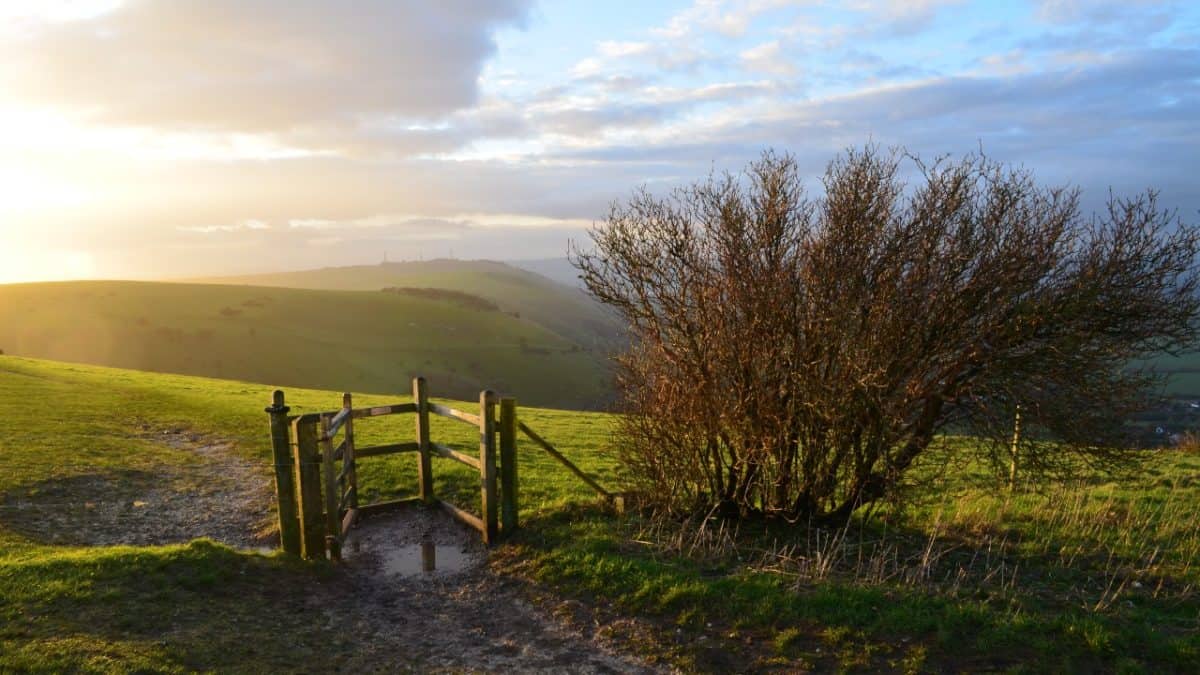
This is a great long-distance choice for those who perhaps aren’t up to the physical challenge of more testing walks. If you’re accustomed to long day walks, you should have no problem at all with the South Downs Way. Even if you’re not a long-distance walker, a couple of practice days should be all you need to get prepared, since the trail isn’t too intense, and the route is basically devoid of any technical challenges.
How Long Will The South Downs Way Take?
Most people tackle this trek in 8 or 9 days, but it’s definitely doable in 6 if you’re accustomed to long-distance walking over long periods. Likewise, it’s possible to extend this walk and take it very easy over a couple of weeks if you’re more interested in relaxation than strenuous exercise. The record for running the trail sits at just over 14 hours, which was achieved in 2014.
When Is The Best Time To Hike The South Downs Way?
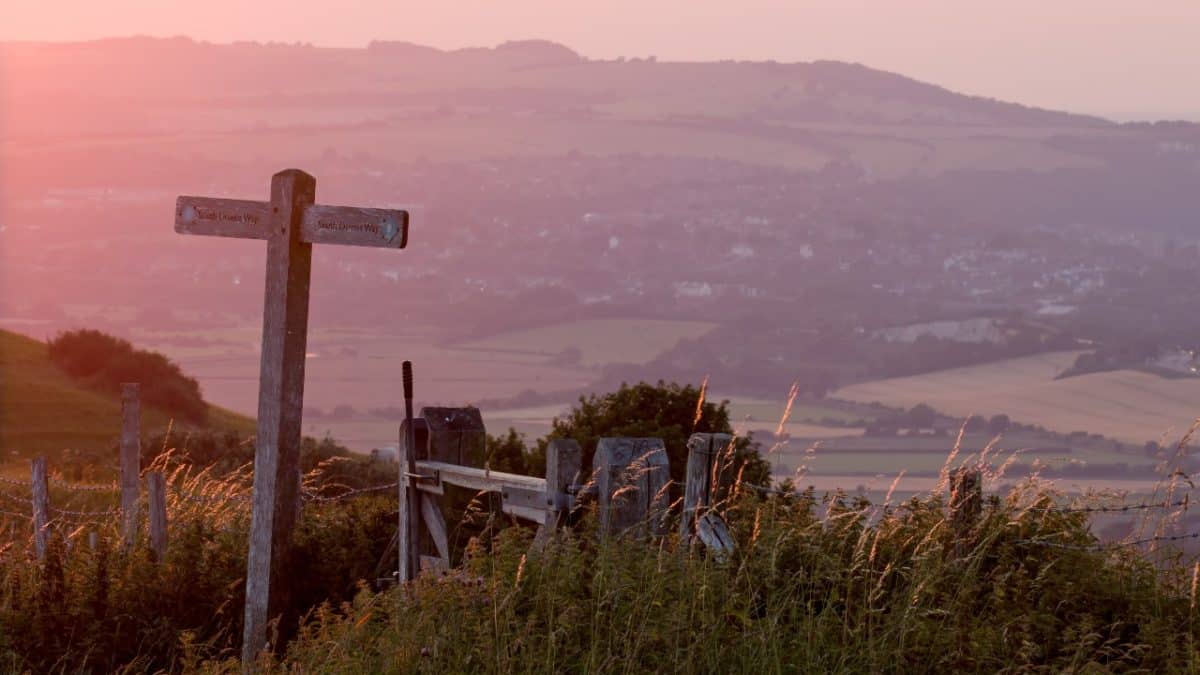
Weather is one of the biggest perks of the South Downs Way. Because of the unique geographical structure of the area, it’s a very dry landscape, which means that walkers experience very small quantities of mud, bog and shoddy ground. All year round, the terrain is very manageable, so you’ll never have to slog around in knee-high marshes like you might on other National Trails.
Any time from March until October should provide warm enough temperatures and reliable enough skies. Winter might not be the most pleasant time to walk unless you prefer colder weather. If that’s the case, you can indeed undertake the South Downs Way in colder months, since the weather won’t be too bad – and the low altitudes and elevations won’t mean you have trouble with navigation.
If you’re keen to avoid crowds, you should avoid the school holidays. It’s also important to note that any weekends between May and September will be busy, especially in the stretches near Brighton and Eastbourne. If you’re looking to avoid crowds, you could time your walk so that you’re near Brighton and Eastbourne on weekdays.
Is The Route Well-Marked?
Yes. It’s very well-marked, so it’s almost impossible to get lost. If you have any experience at all following a trail, you find these easy to navigate.
And even if you don’t, you’d have a hard time getting off-track. The route is also very well maintained, making the paths easy to see without markings. When hiking, you should look for the standard acorn symbol, used to denote National Trail routes. The path is also marked by different coloured arrows as follows:
- Yellow: suitable for walkers
- Blue: suitable for walkers, horse riders and cyclists
- Plum: suitable for walkers, horse riders, cyclists and carriage drivers
- Red: suitable for walkers, horse riders, cyclists, carriage drivers and motorists
As you can see, there’s a comprehensive marking system, perfect if you want to hike without a map, without a compass and without any hassle. Navigation can be fun, but embarking upon a walk where there’s no need for it can be a liberating experience.
What Kit Do I Need For The South Downs Way?
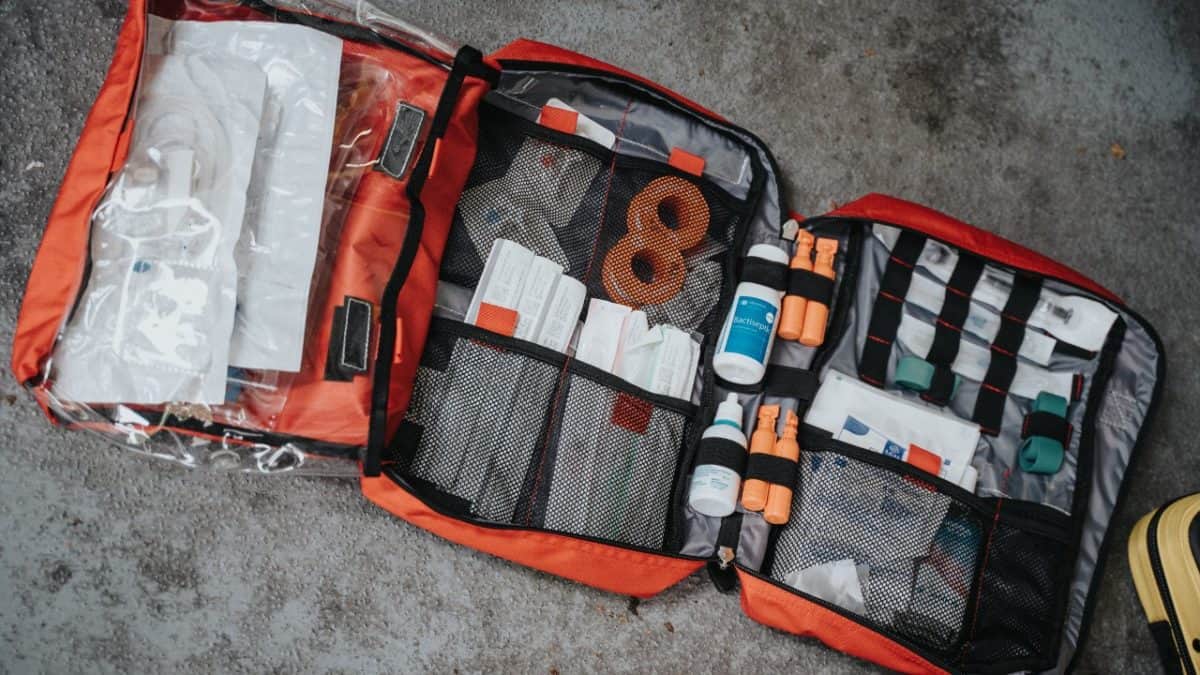
If you’re tackling the whole walk, you’re going to need a lot of equipment:
- Clothes. Of course! You want to pack light, but you also want to ensure that you have enough clothing. For the sake of packing light, use as many Merino Wool clothes (which require way less washing) as you can, including underwear and socks. And wear waterproofs. Minimise how much you need to carry and how much you need to wash. And don’t forget a hat!
- Good shoes. These are essential. Make sure you have experience using the exact shoes that you take with you. Unused shoes (or shoes you don’t have much experience with) can easily lead to blisters and injuries. This is a very important consideration.
- Water bottles and purification tablets. You absolutely need a couple of good-quality refillable water bottles to keep you hydrated along the way. And though you might not necessarily need them, water purification tablets are great if you can’t find fresh, running water. This is fairly unlikely but it’s always good to avert disaster before it strikes.
- First aid kit. You’re likely to need some sort of medical care en-route, even if it’s a simple bandage, bandaid or painkiller. This kit should be good-quality and should include rehydration sachets along with sunscreen.
- Hiking poles. Give your joints some respite.
- Food. Depending on whether or not you’re camping, the amount of food you need will vary greatly. But whatever type of accommodation you’re using, you’ll absolutely need snacks. Take lightweight, calorie-dense treats and nibbles to lighten the load on your back.
- Camping equipment (optional). Some people camp along this trek, while other people stay in accommodation. Camping brings with it more freedom and more isolation, but it also means more to carry, especially if you’re cooking your own meals. But if you are camping, you should ensure all of your gear is lightweight, high-quality and reliable. If you want to cook en-route, you’ll need cooking gear.
Accommodation On The South Downs Way
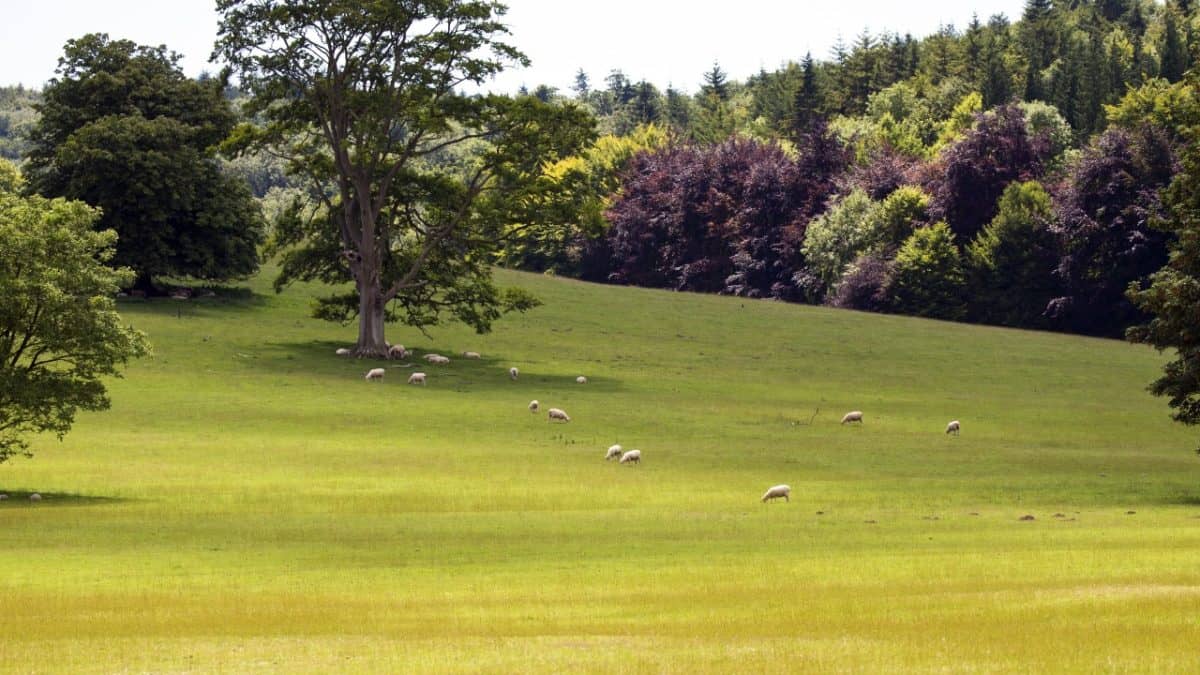
Camping and wild camping are both possible on the route. If you decide to camp it means carrying much more weight in your backpack. Most walkers on the route stay in bed and breakfasts, inns, hotels, and hostels. For all these options you will need to book in advance.
These accommodation options offer a warm shower and a comfortable bed after hours of walking, bringing you closer to the region’s people, heritage and history.
Though we can’t list them all, here are some of the best places to stay while you’re tackling the South Downs Way:
- The Sustainability Centre, East Meon (https://www.sustainability-centre.org/). A really unique and interesting place to stay, the Sustainability Project is situated right on the walk, making it an especially convenient place to stay. The centre runs many sustainability projects, including beekeeping, forest gardening, permaculture, solar projects and plenty more. If you’re interested in the environment in any way, you’ll find this place interesting and inspiring. They offer yurts, camping and a lodge.
- The Foresters Arms, Graffham (https://forestersarms-pub.co.uk/). A little way off the trail, but worth the detour, this pub has been beautifully and lovingly restored, and now offers fantastic food, beer and overnight stays. It’s an archetypal country pub – friendly, welcoming and hospitable!
- YHA Truleigh Hill, Shoreham-by-Sea (https://www.yha.org.uk/hostel/yha-truleigh-hill). Again, this is situated right on the South Downs Way, making it a great place to trundle right into after a long day of walking. This place is one of the many YHA hostels throughout Britain. It’s comfy, friendly, and relatively remote. It’s also a great place to meet others outdoors enthusiasts, as it’s always full with other hikers, cyclists and casual day-walkers.
- YHA South Downs Way, Lewes (https://www.yha.org.uk/hostel/yha-south-downs). Another YHA hostel, and another option which is right on the trail, this converted farmhouse and barn gives you all the conveniences and luxuries you need while still retaining its old-fashioned charm. If you want rustic without sacrificing too much comfort, this is a great way to get it. Accommodation options vary from hostel bunks to pods to bell tents.
- The Grand Hotel, Eastbourne (https://www.grandeastbourne.com/). Sometimes you need a little bit of luxury. And the end of a long walk is a justifiable time to indulge in it. Sometimes referred to as ‘The White Palace,’ this decadent overnighter looks like something from a film. It’s swanky, it’s unmissable and it dominates the shoreline. For those who don’t want to spend so much money, there are plenty of other places to spend less cash.
Are There Places To Eat And Drink Along The Way?

Most National Trails go through many villages where you can stock up on food and drink along the way. This isn’t really the case here. Yes, you’ll find pubs, eateries and hostels which can offer good food, but you won’t find too many places where you can get your hands on an abundance of snacks. Here are the best places to stock up:
- Meonstoke
- Cocking
- Graffham
- Amberley
- Steyning
- Lewes
- Alfriston
All seven of these, along with Winchester and Eastbourne (of course!) will keep you supplied with snacks. But before you set off, it’s a good idea to plan your route around the places where you can get food. You don’t want to be caught hungry and thirsty, so make sure you pass through places where you can replenish.
Before you set off, you should make sure you take lots of calorie-dense snacks such as nuts and seeds, along with sugary carb-heavy fuel foods like dried fruit and flapjacks. Though this walk doesn’t offer quite as many country pubs along the way as other National Trails, you’ll still find a few.
And as with any British walk, country pubs are one of the highlights, full of traditional welcomes, good food and good beer. English pub culture isn’t to be missed, and walking is a great excuse to justifiably indulge in it. This part of the UK also has a few traditional morsels which you should try:
- Southdown lamb: a type of meat exclusive to this part of the world, it’s an older breed of sheep with a rich taste. Southdown lamb is part of the International Slow Food Foundation, which seeks to preserve rare and special foods from around the world.
- Hampshire watercress: peppery, with a mustard flavour, this distinctive watercress is used in everything from salads to soups.
- Farmers’ markets! This region loves farmers’ markets. If you’re lucky enough to be around while one is on, make sure you visit. Winchester’s market is particularly significant – held on the 2nd and last Sunday of each month, it’s the largest farmers’ market in the UK and was recently voted as the UK’s best.
- Fish and chips: the coastal classic, Eastbourne offers up some of the best no-frills fish and chips in the south of England. The perfect carb-heavy antidote to the end of a walk, make sure you get tucked into a big hearty portion
Other long-distance walking routes in England:
- Hadrian’s Wall Path
- Cotswold Way
- Coast to Coast Walk
- Pennine Way Guide
- Thames Path Guide
- Cleveland Way Guide
The South Downs Way is a fantastic walk for many reasons and is perfect if you want a trail that provides a challenge without too many tests. Though it’s a task to be respected, it’s a great option for casual hikers who aren’t ready for too many ups and downs. It’s also a very diverse walk, which offers fantastic National Park territory along with the iconic white cliffs of the south coast.
The walk brings hikers into contact with nature, good food, good people and the heritage and history of the South Downs. It’s a walk for people of all ages and abilities, making it perfect for family holidays or a breakaway with friends. A glorious walk in a glorious part of the world, it’s an excellent choice for walkers of any description. Enjoy!

I love hiking, backpacking, and camping. From the Camino de Santiago to the West Highland Way in Scotland or simply a great day hike on the weekend. Hiking refreshes me, my mind, and keeps my body reasonably fit. So far I have walked three Camino routes and many other long distance hikes in the UK, Canada, and around the rest of Europe. One of the best was my hike up Ben Nevis.

